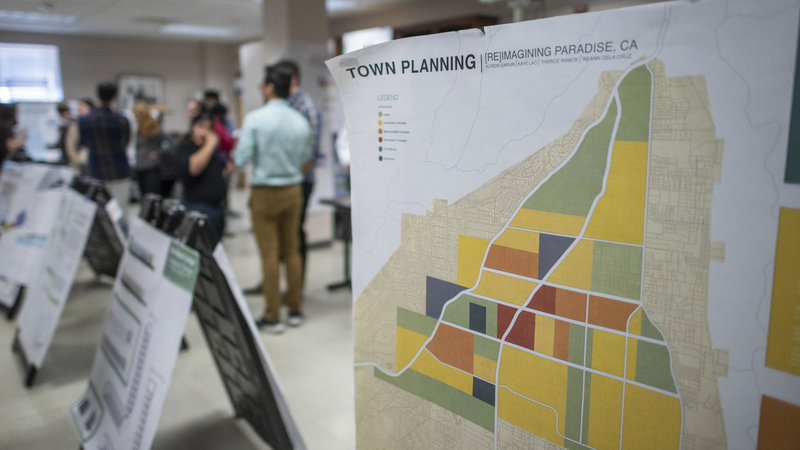
‘Reimagining Paradise’ — Making Plans To Rebuild A Town Destroyed By Wildfire
READ ON
BY KIRK SIEGLER
Last fall’s deadly Camp Fire has brought renewed questions about whether towns in high-risk areas like Paradise, Calif., should even be rebuilt.
Barry Long recently tried to squash those questions immediately as he kicked off a crowded town hall meeting at Paradise Alliance Church.
“One of the first questions we get is, ‘Are they really going to rebuild Paradise?’ ” Long said. “And we say that’s not a question. [The Town] Council made an immediate decision [that] we’re going to rebuild Paradise.”
That was met by a resounding applause from a large crowd of anxious Paradise residents. Long’s firm, Urban Design Associates, was hired by the Town Council to develop a long-term recovery plan for Paradise. They’ve begun holding meetings — the latest scheduled for March 19 — to discuss with residents how they think their town should be rebuilt.
Many people have had to leave Paradise after about 90 percent of the town — almost 19,000 structures — burned to the ground last November in the Camp Fire, which also claimed 85 lives. But for the few who do remain and are eager to begin rebuilding, Long sought to give them reassurances: You can’t just abandon a community that has been a fixture in the Sierra Nevada foothills since the 1800s, he said.
“It took 140 years to build Paradise, and obviously things did survive, like the church here,” Long said.
Urban Design Associates also consulted for the state of Louisiana after Hurricane Katrina. And that’s what this still-unfolding crisis is starting to be likened to: a rural Katrina. One big parallel emerging so far is anxiety over gentrification. Once Paradise is rebuilt, there’s resounding agreement that it will have much tougher fire-safe building codes. And that won’t be cheap.
“We just need affordable living and our home back,” said Paradise resident Cathe Wood.
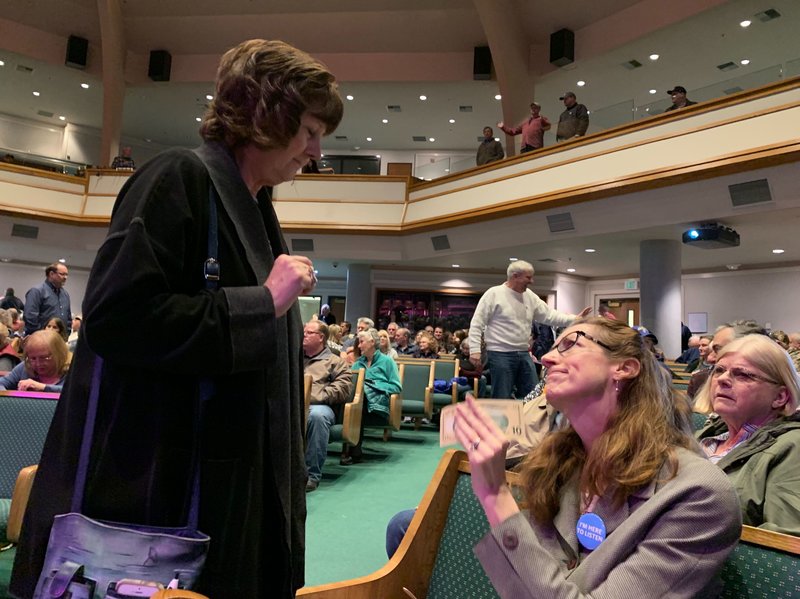
Paradise Mayor Jody Jones talks with anxious constituents about rebuilding their town, destroyed in last fall’s Camp Fire, at a recent town hall meeting at Paradise Alliance Church. CREDIT: KIRK SIEGLER/NPR
Anxiety Over Gentrification
Wood has lived in Paradise for 30 years. She’s planning to rebuild but is still applying for permits and dealing with insurance claims. For now anyway, her job is still in Paradise — she works at an accounting firm that didn’t burn. Her home and her family weren’t so lucky.
“I lost everything,” Wood says. “All my family members are homeless, scattered throughout California. I just want to come home.”
Paradise was a haven for retirees and others who couldn’t afford the city or just wanted to live in the country. Like a lot of Western towns, it grew too quickly — without a lot of planning and scant zoning. Mobile home parks, tract houses, fast-food restaurants were packed into overgrown forests.
Wood hopes something good will come out of all this.
“We have a great opportunity up here for a complete reset,” she says.
A Complete Reset, But Will It Be Affordable?
“Paradise is not going to be the same as it was,” says Jody Jones, the town’s mayor.
As the recovery process moves forward, Jones and other town officials insist they’re trying to balance rebuilding smarter with not mandating expensive changes. But they’ve never done this before, and they’re learning as they go.
“I don’t know that I can give any assurances it’s not going to be gentrified,” Jones says. “Because in some sense of the word, what people mean by that is new, and everything we build is going to be new, it’s going to be different.”
The good news is that Paradise has time to get it right. The scale of this disaster is enormous; even just cleaning it up and removing all the hazardous debris could take more than a year. So it’s not as if the town can just be repopulated and rebuilt immediately as it was.
The cleanup began in earnest only a couple of weeks ago.
Thinking Big
At another forum in nearby Chico, a group of third-year architecture students from Cal Poly in San Luis Obispo may have some answers. They’ve put up poster boards showing architectural renderings of energy-efficient and “fire-wise” municipal buildings. Proposed are redesigned wider street grids for safer evacuations. And neighborhoods are drawn with more cleared-out open space between smaller, modern and up-to-code homes.
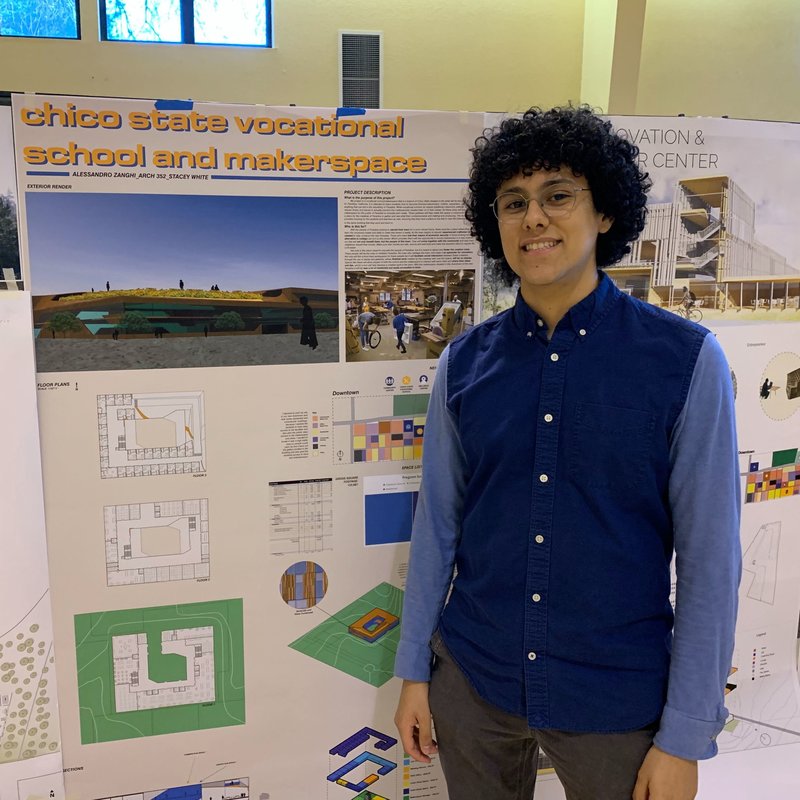
Third-year architecture student Alessandro Zanghi is proposing a new vocational college in Paradise to train people in carpentry, plumbing and other trades that will be in high demand as the foothills town looks to rebuild. CREDIT: KIRK SIEGLER/NPR
A few curious members of the public mingled around the presentation, talking to students who said their models were still a work in progress.
“We’re trying to figure out a different way to rearrange the town so that it better suits the inhabitants and brings new people to Paradise,” said Alessandro Zanghi.
They’re calling it a “reimagined Paradise.” The class typically consults for underserved communities. And when the Camp Fire happened, the curriculum was redesigned to cater to Paradise and surrounding burned-out towns.
For Zanghi, it has been a challenge trying to design proposals that preserve Paradise’s rural character. But he says it’s a misconception that rebuilding or redeveloping a mountain community like this will result in a more expensive town.
“It’s really important to have architecture be more than just luxury high-rises,” Zanghi says. “It should be things that help a community grow and flourish.”
Affordability and gentrification are some of the more heated topics emerging so far in the town’s preliminary discussions. At some cantankerous Town Council meetings, fire survivors have argued with officials over whether they could put campers on burned-out properties and how resources from the Federal Emergency Management Agency will be allocated.
The students’ instructor, Stacey White, says those are tough conversations that have to happen. But what’s going on here is separate. These students can take the time to take a 30,000-foot view of the rebuilding project and hopefully inspire a little hope for the community amid all the setbacks.
“But [these] students have an ability to step back and think, ‘What if we did this right?’ ” White says. “They’re focused on affordability, resiliency and permanence, really investing in the place so we don’t relive this again in 10 years.”
Her class will soon hand over its plans to the town. After four long months of stress and anxiety in this community, the students hope the crisis can also be looked at as an opportunity for Paradise, and they want to help.
Copyright 2019 NPR.org. To see more, visit npr.org
Related Stories:
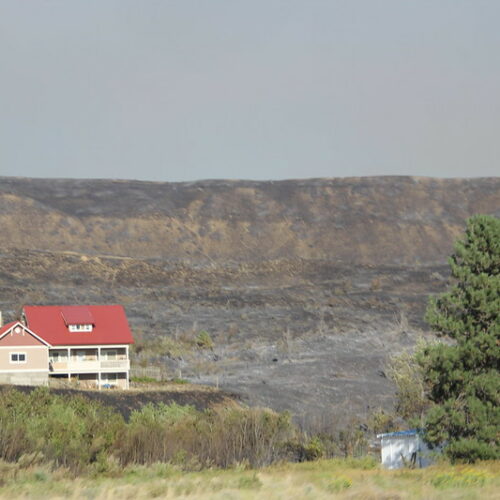
What to do if your insurance company says your home has too much wildfire risk
A home and outbuildings didn’t burn during a fast-moving fire. Some people are worrying more about homeowners policy cancellations in Washington state, as wildfire risk grows. (Credit: Bryan Flint /
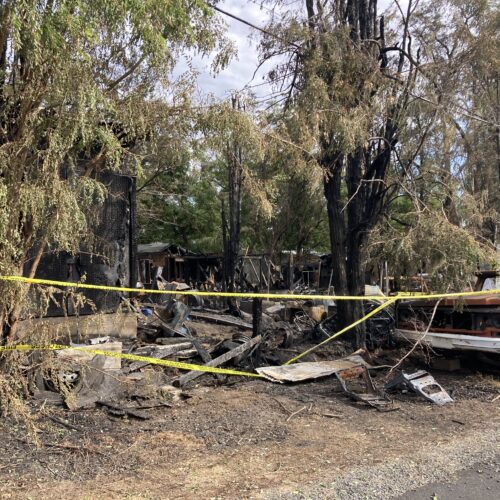
Walla Walla sees 6 suspicious fires in recent weeks
The aftermath of one of Walla Walla’s recent suspicious fires. (Credit: Susan Shain / NWPB) Listen (Runtime 1:00) Read They happen late at night, or in the early morning. They’re
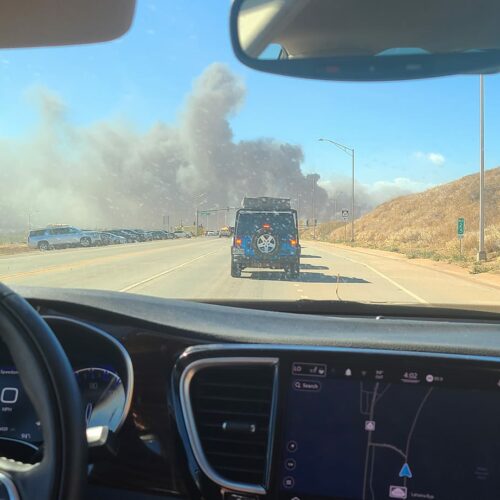
For one Washington family, vacation in ‘paradise’ turns to disaster
After the Vogt family toured sites Maui Monday, they headed back to their resort – and traffic stopped. Flames jumped the highway, said mom, Kara Vogt. (Courtesy of Ryan Vogt)















